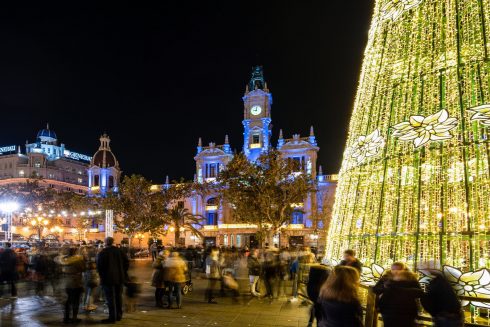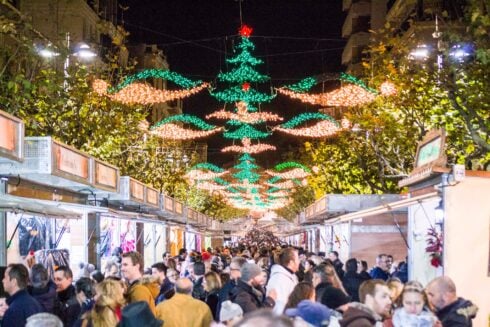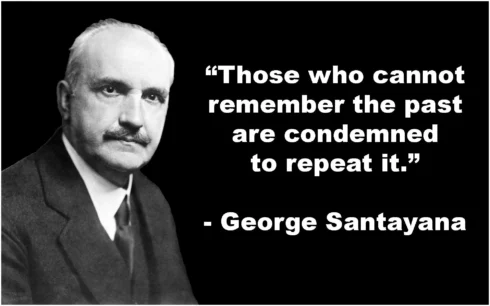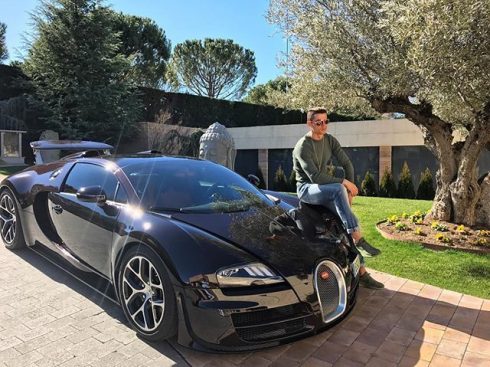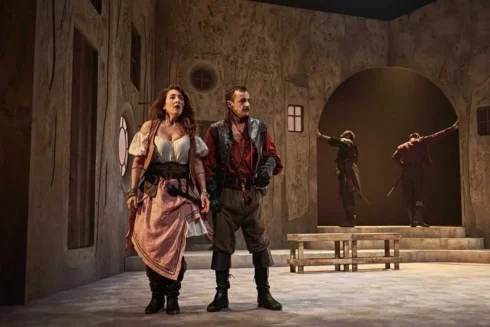VALENCIA’s City of Arts and Sciences (Ciutat de les Arts i les Ciències) is a must visit at any time of year and even more so with the summer here.
Not only are the actual buildings a fantastic testimony to the architectural genius of Santiago Calatrava and well worth a visit in their own right, but curators have a fantastic summer programme of exhibitions lined up.
Come and experience our interactive exhibitions and enjoy 900 square metres of screen in the unique IMAX DOME in Spain.
From Friday 24 June to Sunday 4 September, the Science Museum will open from 10am to 9pm, and the Hemisfèric will release new film listings and extend daily screenings.

Igor Mitoraj
The Ciutat de les Arts i les Ciències hosts an open-access exhibition by Igor Mitoraj, a set of 15 large-scale bronze sculptures that are located in different outdoor spaces of the complex.
The exhibit, carried out in collaboration with the Contini Art Gallery and the Atelier Mitoraj, brings together some of the Polish artist’s works inspired by the concept of shattered beauty. It revolves around fragmented pieces, like the works of the ancient Greco-Roman culture with a certain post-modern touch.

Igor Mitoraj was an international artist who combined modernity with the classical and renaissance tradition in his works. In those works, all made using fine materials like bronze and marble, he denounces the abandonment of the masterpieces of antiquity by some places. Mitoraj is known throughout the world for his gigantic sculptures related to mythological and historical themes. His Greek and Roman “heroes” and “gods” are scattered over half the world, from Paris to the Vatican Museums, from Pompeii to the United States.
How about a ‘live’ planetarium? ‘Las Nocturnas’ in the Hemisfèric

The Hemisfèric’s ‘Las Nocturnas’ offers you the chance to discover the summer’s night sky. Take a peek at the cosmos guided by one of our planetarium specialists and learn about the most representative constellations of this time of year and identify the brightest stars.
Nebulas, star clusters, and the remains of moribund stars are spectacularly revealed thanks to the Hemisfèric’s projection system. Explore Saturn and fly over the most famous rings in the universe, contemplate some of the strangest moons of the solar system, or journey to the confines of the universe to discover an overwhelming view of vastness.
Timetable. From 2 July to 3 September, every Thursday and Saturday. Session recommended for those over 8 years of age. Activity conducted in Spanish. More information https://www.cac.es/en/home.html
The science of music ‘PLAY. Science and music’ at the Museu de les Ciències
Participate in a multimedia experience, play a virtual harp or keep time for an orchestra. In the exhibition ‘Play. Science and music’ we invite you to “play” music via science.
‘Play’ displays an extensive collection of historical musical instruments, spaces with interactive experiences surrounding the creative and cognitive processes of music, as well as multimedia experiences. An exhibition full of surprises: How much talent and how much technology are needed to play music with a mechanical machine? Music recorded on a wooden roller…! Can we see the waves? Is there music in a vacuum?
There are optional guided tours of the exhibition. The price is 2.50 euros. The tour finishes with workshops in which “sound effects” are tested and visitors are invited to play instruments. An admission ticket to the Museu de les Ciències must also be purchased.
New Exhibition: Viral
Discover the multiple facets of contagion and its impact on our lives. Have a positive, fun, and… contagious… experience!
From contagious diseases to financial collapse, from demonstrations to the Y2K effect. “Viral. A contagious experience” explains what contagion is, how it works, and its impact on our lives. The interactive exhibit deals with the many facets of contagion using a story that includes a variety of phenomena related to biology, epidemiology and public health, the science of networks, psychology, and the social sciences.
Participate in a simulation of contagion, identify the causal agents of illnesses, and explore the social networks that shape our lives. Discover mirror neurons, what financial contagion is, what makes a video go viral and your role in the process of contagion. More than an exposition, “Viral” is a positive, fun, and… contagious… experience!
The exhibit has been created by the Pavilhão do Conhecimento – Centro Ciência Viva of Lisbon, in cooperation with the Cité des Sciences et de l’Industrie of Paris, and Heureka of Helsinki.
A stroll along the Museu’s Calle Mayor: Foucault’s Pendulum and the sculpture of DNA

Strolling along the Calle Mayor of the Museu de les Ciències is another of the ‘must sees’ if the Ciutat de les Arts y les Ciències is visited. With an area of 4,000 m2 and a length of 200 metres, its cascade of glass rises to a height of 30 metres, and this space is presided over by the five giant columns that support the building. In addition, it houses two of the large signature elements of the Museu: Foucault’s Pendulum and the artistic rendering of a molecule of DNA.
Our pendulum hypnotises with its 30-metre length: it is one of the longest in the world and its complete rotational cycle takes 34 hours. In reality, it is not the pendulum that revolves, but the earth and, with it, the whole Museu moves “around” the pendulum.
The swing of the pendulum is not dampened due to an electromagnetic system located in the ceiling which maintains its oscillation and allows, after a while, the observation of its slow, but continuous, clockwise rotation. Although, thanks to Foucault, we know that is an illusion: it is the building – and with it, the whole planet – that is turning “below” the pendulum.
Everything around us revolves, with the planet, every 24 hours. In addition, Earth revolves around the sun and the sun and its planets around the Milky Way… But Foucault’s pendulum ignores those movements. It is aligned with the universe. Are you waiting to see how the next ball falls?
The third floor of the Museu: Know thyself (and you will know the universe)
Exploring ourselves in the “Chromosome Forest”
On the third floor of the Museu, go and discover what we are like in the Chromosome Forest. Experiment and learn with more than a hundred interactive modules.
In the Chromosome Forest, 23 pairs of giant chromosomes represent, on a grand scale, the genome of the human species. Walking around the exhibition you will discover what portion of the body is water, what allows us to hear, how we learn, where blood goes when it leaves the heart and what ingenuity is. In more than a hundred interactive games you can see how far you can jump, how long you can keep your balance, and your muscle power. We are waiting for you to experiment and learn!
Mars. The conquest of a dream

Experience and discover the most relevant facts and oddities of the red planet. Listen to what your voice would sound like or what your weight would be on Mars.
Through five large blocks, you’ll answer questions like, “Why does Mars spark so much interest?” Or, “What pieces of data define Mars and set it apart from the rest of our solar system’s planets?” You’ll experience the planet from the perspectives of science and science fiction, its influence on the collective imagination, and how it has been portrayed in culture. Lastly, you’ll take a look at the different milestones of the space race to Mars and the future of its human conquest.
Mars. The conquest of a dream includes some pieces of great historical and documentary value. Replicas of astronomy books like Nicolas Copernicus’s De revolutionibus orbium coelestium and Johannes Kepler’s Astronomia Nova; facsimiles of original illustrations from “The war of the worlds, a replica of Galileo Galilei’s first telescope and two 3D-printed models that simulate possible living quarters on the red planet.
In the exhibition, we can enjoy learning diverse facts about the red planet via a virtual assistant that welcomes us from the visitors’ centre on Mars. A giant screen simulates the hologram of a character that gives us a weather report, but with the relevant information for the new Martian colonists, as well as advice about security measures during the earthling tourists’ visit.
There are optional guided tours of the exhibition. The price is 2.50 euros. An admission ticket to the Museu de les Ciències must also be purchased.
Astronaut for a day in ‘Zero Gravity’
If you want to learn about European space research, see original pieces of the Hubble telescope, or be carried away by spectacular images of space in motion, you can’t miss the exhibition ‘Zero Gravity, where you will also have the chance to take a stroll through the International Space Station under the direction of the astronaut Pedro Duque. The Space Simulator has two sessions in English: one at 1 pm and the other at 6:00 pm.
Learn about the cosmos with interactive modules that explain strange phenomena in astronomy and come to know the principal work and research carried out by the European Space Agency (ESA), which collaborated in this exhibition. And don’t forget to experience the vastness of space with the surprising “cube”, covered inside with mirrors, where real images of the cosmos and Earth viewed from outer space are projected.
IMAX and 3D adventures: from the Amazon to Mars and ‘Flying Monsters”
The Hemisfèric has revamped its listings with the IMAX film ‘Amazon Adventure’, an IMAX screening that describes the mythic expedition led by the English naturalist Henry Bates in the middle of the 19th century. The film narrates the extraordinary eleven-year journey through the Amazon rainforest of the young researcher Bates, who risked his life for science and made critical contributions to biology.
‘”Flying Monsters 3D” is the new film for this summer, from 1 July. It recounts the fantastic story of the mysterious creatures that rode the winds when the dinosaurs walked the earth.
The work sets out to discover the truth about the enigmatic pterosaurs, flying giants that could measure up to 12 metres, and figure out how they were able to defy gravity and rise to ride through the prehistoric skies. The science educator and naturalist Sir David Attenborough tries to answer the questions in this film, tying together history, research and science.
The pterosaurs, with dimensions that range from the size of a sparrow to that of an aeroplane, ruled the skies in the Jurassic and Cretaceous eras, and include the largest known vertebrate with the ability to fly: the Quetzalcoatlus. The appearance of flight in this order of animals is separate from the evolution of bats and birds. The pterosaurs are not dinosaurs, although they coexisted with them for dozens of millions of years. Nor are they birds, hypothetically having appeared some 75 million years before, and with the ancestors of both being very different.
Another IMAX Film is “Journey to Space. Next Stop: Mars” which shows you the exciting current plans and challenges that NASA and the space industry have in-store to undertake future missions, like landing astronauts on Mars or capturing asteroids.
To find out more about What’s On at the CIUTAT DE LES ARTS I LES CIÈNCIES visit: https://www.cac.es/en/hemisferic/cartelera.html
READ MORE:
Stratospheric: How Valencia’s City of Arts and Sciences put the city on Spain’s design map
Click here to read more Sponsored News from The Olive Press.


